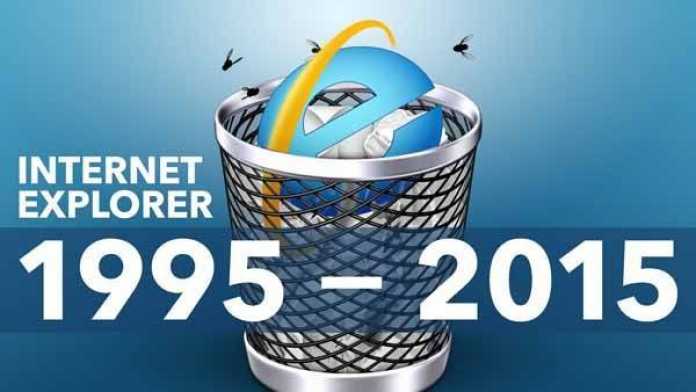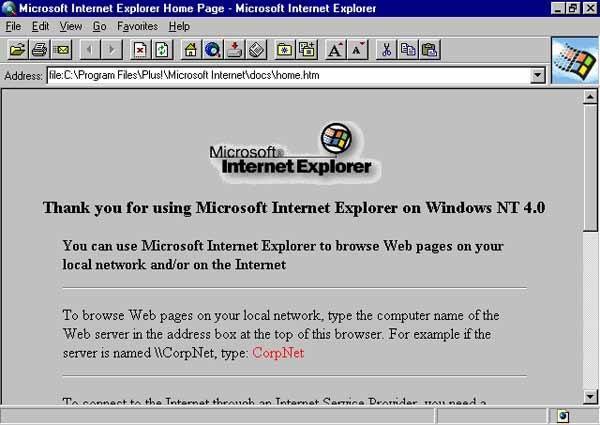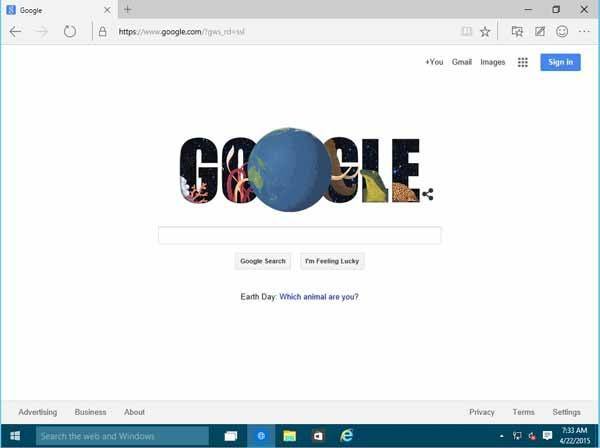The journey of Internet Explorer (IE), Microsoft’s famous internet browser has come to an end. Although, not most people were a big fan of the IE’s big blue icon, but we must all admit that it was the one of the first net surfing tool that made the creation of other internet browsers possible. Since Microsoft’s announcement of the discontinuation of IE Back in March, people had been in celebrations but it was only after the arrival of Edge browser that we realize, we will miss the old notorious friend.
So let’s remember Internet Explorer in one last review and have a look back at its Journey… in Wikipedia style! Before we begin, keep in mind that Windows 7 and Windows 8 are still in vogue and Edge browser is a newbie, so seeing off Internet Explorer to its complete departure is going to take a while. Every new operating system beginning from and following Windows 10, will say no to IE.
The Journey of Internet Explorer: Early Life
Originally inspired from Mosaic, Internet Explorer 1.0 was first launched in August 1995.The primitive versions of the browser were synonymous with Windows 95 and you may not know, but don’t laugh out loud when I say it was a paid luxury. That’s right, it wasn’t a free offer at all, but due to the lack of competition, it really sold like a pie. So now you know IE once was a superstar!
The only resistance that IE faced at that time was the war waged by Netscape Navigator, which was also derived from Mosaic. Both browsers had appeared in a time when the internet was growing at an exponential rate in America, thus the market had to be dominated in what famously came to be known as the ‘first browser war’.
The Journey of Internet Explorer: The Rise
In 1996, Internet Explorer 3.0 came to the scene with a free offer and brand new ‘e’ logo (which now looks ancient). The year 1997 saw an improved 4.0 version, packed with windows which passively allowed Microsoft to set it as a default browser, a powerful strategy that worked miracles for IE. That marked the true success for Microsoft’s browser, as most PCs were powered by Windows and IE came along with it as the result of the bargain. So much so that this preinstalled application lead the company to an anti-trust and monopoly case with the US government, which was solved after 3 years of legal turmoil.
Considering the privileges that Microsoft earned as a result of bundling IE in Win97, the legal crisis that rose due to it was negligible. It completely blew Netscape Navigator out of the competition and Internet Explorer reached its peak during 1997 to 2000. This entitled IE with an absolute dominion over the web, a crown that it would hold for years to come. Which is quite a long period to enjoy kingship, however in the ebullience of power, Microsoft forgot to make solid modifications to keep in pace with the world and it’s more stable and speedier internet surfing.
The Journey of Internet Explorer: The Golden Age
Internet Explorer made minor improvements along the line, when versions 5.0 and 6.0 arrived; its fame was on peak. From 1997-2004, the Internet Explorer enjoyed an unparalleled success as the most popular browser for browsing the web.
However, the same period was responsible for its demise in the days to come, because users had no other options and Microsoft was not doing its best to improve IE in terms of speed and stability. Moreover, the 6.0 release had tons of security issues. Windows 98, Windows 2000 and later Windows XP had emerged as the most promising and widely used operating systems, and what do they all had in common? Internet Explorer! People were literally screaming, something needed to be done.
Unfortunately, by the time Microsoft realized its mistake, it was too late for IE to defend the post and ghosts of Netscape had returned in the shape of Firefox. To Internet Explorer’s nightmares, the decline had already begun somewhere in 2004 and it could never again achieve the same spot, not in the least sense.
The Journey of Internet Explorer: The Fall
After 2004, new champions entered the arena of internet browsing. Mozilla Firefox, which came to fame in 2006, was actually released in September 2002. A year later, Apple also decided to gamble, betting on Safari that filled the gap of leftover slots. However, it wasn’t until 2008, when Google Chrome joined the race and turned out to be Zeus of all the internet browsers. Yes, there were others, they had their chance, but Chrome truly changed the game.
Microsoft’s Internet Explorer was completely cornered, facing worthy competition from every direction. It struggled to improve with version 7.0, which could’ve been really something, had they brought it forward a little earlier, because, in the face of the fiery fox, IE 7.0’s courage was dwindling. Microsoft’s free bundling maneuver had long before lost its charm, besides the fact that all the other latest browsers were also free.
However, instead of bringing a formidable change, IE began to hide its inadequacies by hiding behind the cover of OS, each new edition of Windows came with new versions of Internet Explorer. Version 8.0 in 2009 observed some security improvements, while version 9.0 did some good in enhancing the interface, but doesn’t matter what they tried, IE had lost users’ trust, as ‘we’ finally had better options to look at.
The dawn of 2011 saw the last of IE and left it with a very limited user base, which only existed because it came packed with windows and people used it to download a different browser. So much so that the joke became an internet sensation, in other words, Internet Explorer itself became a joke. The usage of IE was not professional or secure anymore and Firefox became everyone’s favorite as a default browser. According to StatCounter, from January 2011-2014 IE lost about 40% of its user base to Chrome and Firefox.
The death sentence of Internet Explorer came in March 2015, by Microsoft, who announced that Edge browser is going to take its place, to be solely used with Project Spartan.
The Journey of Internet Explorer: The Relics
Internet Explorer 11 will remain unchanged from Windows 8, same applies to Windows 7, Vista and XP. As long as these people find older versions of Windows useful, Internet Explorer cannot truly die. The newest Windows 10 and then there on, IE will only exist in the pages of history and Wikipedia. Microsoft’s new Edge browser will inherit all the responsibilities of the previous browser (hopefully not the faults) while the first impression of Edge browser was well received around the globe, as Windows 10 is now powering over 8M PCs.
Final Words
Today, Google Chrome is the champion of Internet surfing, but even it cannot achieve the unprecedented throne that Internet Explorer once Enjoyed. For 20 years, Internet Explorer paid its services to us, irrelative to its performance; it is the oldest living browser and deserves a respectful mention.
The new generation might not feel a hitch at all, but it’s the 90’s people who will truly understand and appreciate Internet Explorer, because doesn’t matter what browser we installed, it was always there for us as a backup. To Internet Explorer, we will never forget your Legendary Icon. So long!






















